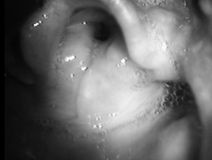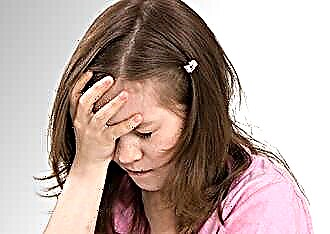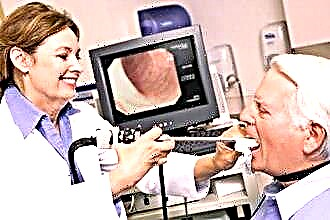The question of how to treat a runny nose in babies will always be relevant for young parents, especially when the weather is so unstable, and there are a lot of colds around. Babies easily catch a runny nose, because the body of an infant is practically defenseless against viruses. In the first years of life, the immune system is just forming, and recurrent colds are an integral part of this process.
Treating a cold in children under one year old is not an easy task, because many drugs that can help with a cold are contraindicated for infants. How to get rid of snot in a baby in this case?
In this article, we will tell you what drugs can be used to treat a runny nose in a child under one year old and what to do if a baby has a runny nose in order to quickly get rid of snot.
Determine the cause of the common cold
 Before treating snot in a baby, you need to understand what exactly caused their appearance. A runny nose is not a disease, but a symptom that is characteristic of several diseases, such as:
Before treating snot in a baby, you need to understand what exactly caused their appearance. A runny nose is not a disease, but a symptom that is characteristic of several diseases, such as:
- ARVI - acute respiratory viral infection;
- allergic rhinitis;
- bacterial rhinitis;
- vasomotor rhinitis.
Treatment for a cold in infants will differ depending on which of the above reasons provoked it.
In addition, in newborns and children under one year old, a runny nose can be caused by other, characteristic only of an early age, reasons. More about them:
- Physiological rhinitis caused by the physiology of the mucous membrane in a child 3 months and younger. In babies, the mucous membrane is at first very dry, and then, on the contrary, becomes too moist. This is due to its rearrangements in the course of adaptation to environmental conditions. Sometimes so much mucus is produced that it looks like snot.
If a runny nose in a baby for 2 months of life is not accompanied by any disturbances (no temperature, normal appetite and sleep), parents have nothing to worry about. Such a runny nose in a 2 month old child is physiological, it is not dangerous and does not require treatment.
- Teething is another cause of the common cold in children 5 months of age and older. When teething, the gums become inflamed, blood is actively flowing to them. Such changes provoke excessive mucus production both in the mouth (i.e. saliva) and in the nose. Teeth can begin to erupt at 4 months, but this is rather an exception - there is a much higher probability of the appearance of the first teeth in a 6 month old baby. Is it possible to quickly cure a runny nose in a teething baby 6 months old? In fact, there is no need for this - the runny nose will go away when the tooth erupts.
- A runny nose as a reaction to dust, dry air and heat is common among infants. Such a runny nose in children under one year old is not treated with drugs, but by changing the conditions in the house. It is recommended to do wet cleaning frequently, not to abuse heaters. The air humidity should be maintained in the range of 60-70%, and the temperature at + 20C.
Treatment of a common cold with ARVI
SARS is the most common cause of the common cold in children. Most often, ARVI outbreaks occur during the cold season, since during hypothermia, viruses more easily penetrate the body. The entrance gate for infection is the upper respiratory tract - the nasopharynx and the oral cavity.
In infants, viral rhinitis is almost never isolated - in addition to the nasal cavity, the virus infects the pharynx, and sometimes the larynx, trachea. As a result, rhinopharyngitis, rhinopharyngolaryngitis, etc. develops.
The child develops characteristic symptoms - sneezing, redness of the throat, liquid or viscous discharge from the nose, often coughing and fever.
It is possible to treat a runny nose in children with ARVI at home (under the supervision of a pediatrician).
General treatment regimen
How to cure a runny nose for a baby with a cold? According to the attending physicians, the successful treatment of a cold in infants has three components:
- Moisturizing mucus in the nasopharynx. The viscous and thick mucus prevents the baby from breathing normally. How to get rid of it? It should be liquefied by applying moisturizing nasal drops (for example, Aqua Maris based on seawater and analogues). They have no contraindications and can be used in the treatment of the common cold in infants.
- Drink plenty of fluids. Compensates for fluid loss by the body, reduces the viscosity of secretions and prevents dehydration (especially if the patient has a high fever).
- Ancillary therapy - antipyretic, vasoconstrictor, etc. (as needed).
What drugs are suitable for babies?
Choosing a drug for a sick child is not an easy task, especially when it comes to babies. So, most nasal drops are contraindicated in infants. For example, vasoconstrictors for children under 1 year old are given strictly according to the doctor's indications, moreover, in a diluted form (mixed with boiled water).
Vasoconstrictor drugs do not speed up recovery or kill viruses, but they can make breathing easier if your child's nose is blocked.
Children over one year old can drip 0.025% naphazoline solution (naphthyzine, sanorin). For children over 2 years old, a wider range of vasoconstrictor drops is suitable - Nazol, Nazivin, Galazin and Tizin. When using vasoconstrictor drops, it should be remembered that the maximum course of their use is 5-7 days (with an increase in the course or dosage, side effects may occur - burning in the nose, swelling of the mucous membrane, headache).

How to cure snot, if the child is not yet a year old, without resorting to taking vasoconstrictors? A runny nose in babies 3 months and younger is recommended to be treated exclusively with moisturizing drops - Aqua Maris, Salin and analogues. At home, you can prepare a complete replacement for such drops by dissolving a teaspoon of ordinary kitchen salt in a liter of boiled water. Such a solution can be instilled into the patient's nose every half hour, a small drop in each nostril.
Antipyretics should be used as needed. So, the temperature in a child under 3 years old should be reduced only when the indicators exceed 38-38.5C. Paracetamol-based antipyretic drugs are recommended.
A temperature below 38C does not threaten the health of the baby and accelerates the elimination of viruses from the body.
Do not give stronger antipyretics to babies without first consulting a pediatrician. If paracetamol does not help bring down the temperature, call an ambulance.
Allergic rhinitis treatment
Allergic rhinitis is the second most common type of rhinitis in children. Unfortunately, parents do not always guess that the child has allergic rhinitis - they can write off a constant runny nose and congestion for frequent colds, ineffectiveness of drugs, etc.
 Allergic rhinitis is a chronic disease caused by the body's hypersensitivity to an allergen (or several allergens) that enters the nasopharynx with inhaled air.
Allergic rhinitis is a chronic disease caused by the body's hypersensitivity to an allergen (or several allergens) that enters the nasopharynx with inhaled air.
Contact of the allergen with the mucous membrane provokes inflammation, which leads to the appearance of the typical symptoms of allergic rhinitis - sneezing, discharge of clear mucus from the nose, watery eyes, redness of the eyes. At the same time, the temperature and activity of the child as a whole are not disturbed.
How to treat a child's runny nose if it is caused by an allergy? First, it is necessary to limit contact with a potential allergen. It can be house dust, animal hair, plant pollen, components of household chemicals, etc.
Second, antihistamines (anti-inflammatory) drugs should be used if necessary. Children from 1 month old can be prescribed antihistamines of the 1st generation (based on promethazine, dimetindene, chloropyramine). They have antiserotonin activity.This means that in addition to being anti-inflammatory, they produce a sedative effect (cause drowsiness, apathy). The sedative effect of the 2nd generation antihistamines (loratidine, cetirizine, etc.) is less pronounced, however, they are allowed for children who have reached 2 years of age.
There are also drugs for allergies in the form of nasal drops, for example, Vibrocil, Levocabastine. They can be used for a long time (more than 2 months, as opposed to vasoconstrictor).
Bacterial infections
Bacteria rarely cause colds in infants; nevertheless, if the child develops yellow-green purulent discharge from the nose, this option cannot be ruled out. Bacterial rhinitis is a dangerous disease. In infants, it is accompanied by a high temperature that threatens the health and life of the baby; in addition, the bacterial infection can spread to the middle ear, paranasal sinuses, and pharynx. Bacterial rhinitis not cured in time is the main cause of chronic rhinitis.
How to cure a runny nose in an infant if a bacterial infection is suspected? First of all, the patient should be examined by a doctor. Then he will prescribe treatment - it can be antibiotics in the form of tablets (less often - injections), vasoconstrictor and moisturizing nasal drops, physiotherapy.
On the use of folk methods in the treatment of infants
You can treat snot in an infant at home, but this does not mean that you can not go to the pediatrician. Only a qualified doctor, having examined a sick baby, will be able to answer you how to treat a cold in an infant in your case. You should not use any drugs without consulting a specialist. You should be especially careful with the methods of traditional medicine, which supposedly help get rid of a cold in infants in an instant.
It is strongly not recommended to use plant juices, for example, beets, aloe, for colds in newborns and babies - they can cause allergies, edema and damage to the mucous membrane from fruit acids.
Also, do not treat snot in an infant with breast milk or honey - they contain too much sugar and too little antimicrobial substances to speed up recovery.
Thus, there can be only one answer to the question "how to quickly cure a runny nose in a baby" - you need to treat it not quickly, but in full measure, and with minimal side effects on the child's body.



